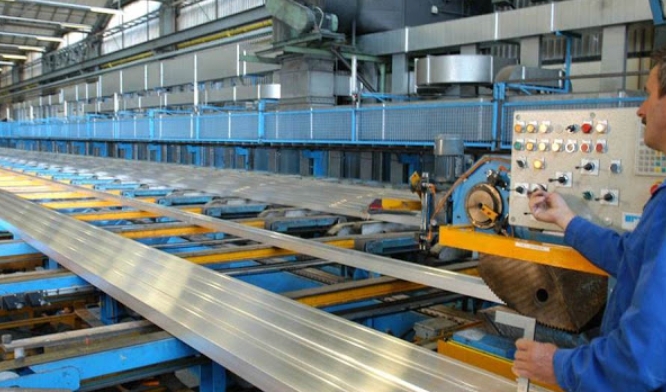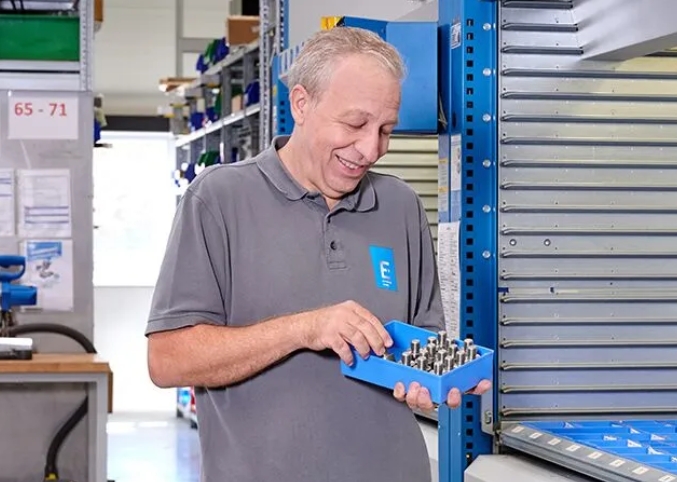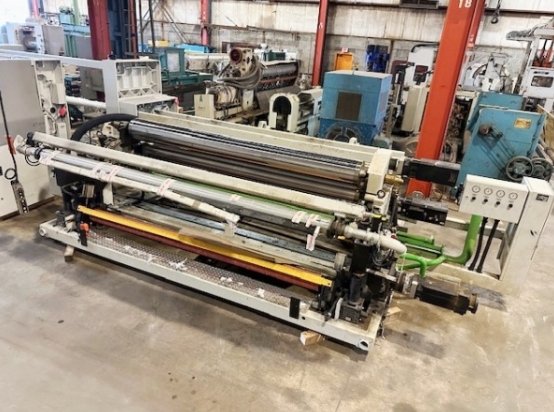Content Menu
● Introduction to Extrusion Machinery and Equipment
● Key Components of Extrusion Machinery
● Main Types of Extrusion Machinery and Equipment
>> Single Screw Extruders
>>> Principle and Design
>>> Applications
>>> Advantages
>>> Limitations
>> Twin Screw Extruders
>>> Principle and Design
>>> Applications
>>> Advantages
>>> Limitations
>> Ram (Piston) Extruders
>>> Principle and Design
>>> Applications
>>> Advantages
>>> Limitations
>> Specialty Extruders
>>> Roller Die Extruders
>>> Impact Extruders
>>> Multiscrew Extruders
● Extrusion Machinery by Material Type
>> Plastic Extrusion Machinery
>> Metal Extrusion Machinery
>> Rubber and Silicone Extrusion Machinery
>> Food and Other Specialty Extrusion Machinery
● Selection Criteria for Extrusion Machinery and Equipment
● Innovations and Trends in Extrusion Technology
● Maintenance and Safety Considerations
● Conclusion
● FAQ
>> 1. What is the difference between single screw and twin screw extrusion machinery and equipment?
>> 2. Which materials can be processed using extrusion machinery and equipment?
>> 3. How do I choose the right extrusion machinery and equipment for my application?
>> 4. What are the main maintenance challenges for extrusion machinery and equipment?
>> 5. What are some recent innovations in extrusion machinery and equipment?
● Citations:
Extrusion machinery and equipment are the backbone of modern manufacturing, enabling the continuous production of products with consistent cross-sectional profiles. From plastic pipes and window frames to metal rods and food products, extrusion technology is indispensable across industries. This comprehensive guide explores the various types of extrusion machinery and equipment, their working principles, applications, and how to select the right system for your production needs.

Introduction to Extrusion Machinery and Equipment
Extrusion is a process in which a material is forced through a die to create objects with a fixed cross-sectional profile. Extrusion machinery and equipment are designed to handle a wide variety of materials, including plastics, metals, rubber, ceramics, and food products. The versatility and scalability of extrusion make it a preferred manufacturing method for both high-volume industrial applications and specialized, small-batch production[2][7].
Key Components of Extrusion Machinery
Regardless of the specific type, most extrusion machinery and equipment share several fundamental components:
- Feed Hopper: Where raw material is loaded into the machine[7].
- Barrel: A heated chamber that houses the screw or ram.
- Screw or Ram: The mechanism that pushes material through the barrel[1][2].
- Die: Shapes the extruded material into the desired profile[1][7].
- Heating and Cooling Systems: Control the temperature of the material as it is processed[1].
- Drive System and Motor: Provide the necessary power and control for the extrusion process[1].
- Instrumentation: Sensors and controls for temperature, pressure, and other process variables[1].
- Ancillary Equipment: Includes cutters, pullers, winders, and downstream processing units for finishing the extruded product[1].
Main Types of Extrusion Machinery and Equipment
Single Screw Extruders
Principle and Design
Single screw extruders are the most common type of extrusion machinery and equipment used in the plastics industry. They consist of a single rotating screw inside a heated barrel. As the screw turns, it conveys, melts, and mixes the material, forcing it through a die to form the desired shape[3][5][6][7].
Applications
- Plastic pipes
- Films and sheets
- Profiles for windows and doors
- Cable insulation
Advantages
- Simple design and operation
- Cost-effective for standard applications
- Easy to maintain
Limitations
- Less effective for mixing additives or processing heat-sensitive materials
- Not ideal for highly filled or complex formulations[5][6]
Twin Screw Extruders
Principle and Design
Twin screw extruders use two intermeshing screws housed within the same barrel. The screws can be co-rotating (same direction) or counter-rotating (opposite directions), providing superior mixing and conveying capabilities[5][6][7].
Applications
- Compounding and blending of polymers with additives
- Processing of heat-sensitive or complex materials
- Food processing (e.g., snacks, cereals)
- Pharmaceutical and chemical industries
Advantages
- Enhanced mixing and dispersion of materials
- Greater flexibility in processing
- Higher throughput and control over material properties
Limitations
- More complex and expensive than single screw extruders
- Higher maintenance requirements[5][6]
Ram (Piston) Extruders
Principle and Design
Ram extruders, also known as piston extruders, use a hydraulic or mechanical ram to push material through the die. This method is especially useful for materials that cannot be processed by screw extruders, such as certain ceramics and PTFE (polytetrafluoroethylene)[4][5][8].
Applications
- Metal extrusion (aluminum, copper, steel)
- Ceramic and refractory products
- PTFE and specialty plastics
Advantages
- Suitable for high-viscosity or non-melt-processable materials
- Capable of producing large, solid sections
Limitations
- Lower production rates compared to screw extruders
- Higher energy consumption[4][5]
Specialty Extruders
Roller Die Extruders
These machines use counter-rotating rolls to press material into a die, ideal for producing thin, flat products such as sheets and films[5].
Impact Extruders
Utilize a high-speed ram to force material into a die, commonly used for manufacturing metal tubes and containers[5].
Multiscrew Extruders
While rare, multiscrew extruders (more than two screws) are used for highly specialized mixing and compounding operations[4].

Extrusion Machinery by Material Type
Plastic Extrusion Machinery
Plastic extrusion machinery and equipment are the most widely used, with applications ranging from packaging films to automotive components[3][6][7]. Types include:
- Plastic Sheet Extrusion Equipment: Produces continuous sheets or films[3].
- Profile Extrusion Machines: Used for window frames, weather stripping, and custom shapes.
- Pipe and Tubing Extrusion Machines: For manufacturing pipes, hoses, and conduits.
Metal Extrusion Machinery
Metal extrusion machinery is designed to handle high-temperature and high-pressure processes required for shaping metals such as aluminum, copper, and steel[2][5]. Types include:
- Hot Extrusion Presses: For metals that require preheating.
- Cold Extrusion Presses: For metals processed at or near room temperature.
- Hydrostatic and Indirect Extruders: Specialized for specific metal forming needs[2].
Rubber and Silicone Extrusion Machinery
Rubber and silicone extrusion machinery and equipment are tailored for elastomeric materials, often featuring specialized temperature control and die designs[2][5]. Applications include:
- Seals and gaskets
- Automotive parts
- Medical tubing
Food and Other Specialty Extrusion Machinery
Food extrusion machinery is used for products like pasta, snacks, and pet food. These machines often use twin screw designs for better mixing and cooking control[5]. Other specialty extruders handle ceramics, fiber, and composite materials[2].
Selection Criteria for Extrusion Machinery and Equipment
When choosing extrusion machinery and equipment, consider the following factors:
- Material Type: Plastics, metals, rubber, food, or specialty materials[2][6].
- Product Profile: Shape, size, and complexity of the desired product.
- Production Volume: Batch size and throughput requirements.
- Mixing and Compounding Needs: Degree of mixing or dispersion required[5][6].
- Temperature and Pressure Requirements: Based on material properties.
- Cost and Maintenance: Initial investment, operating costs, and ease of maintenance[5][6].
Innovations and Trends in Extrusion Technology
Recent innovations in extrusion machinery and equipment include:
- Advanced screw and barrel designs for improved mixing and energy efficiency
- Real-time process monitoring and automation for quality control
- Modular and flexible extrusion lines for rapid product changeover
- Sustainable extrusion processes using recycled materials and energy-efficient systems
Maintenance and Safety Considerations
Proper maintenance of extrusion machinery and equipment is essential for consistent product quality and operational safety. Key practices include:
- Regular inspection and cleaning of screws, barrels, and dies
- Monitoring of temperature and pressure sensors
- Lubrication of moving parts
- Training operators on safe handling and emergency procedures
Conclusion
Extrusion machinery and equipment are vital to modern manufacturing, enabling the efficient production of a vast array of products across multiple industries. From the ubiquitous single screw extruder to advanced twin screw and specialty machines, the right choice of extrusion equipment depends on material, product requirements, and production goals. As technology advances, extrusion machinery continues to evolve, offering greater efficiency, flexibility, and sustainability.

FAQ
1. What is the difference between single screw and twin screw extrusion machinery and equipment?
Single screw extruders use one rotating screw to convey and melt material, making them ideal for standard applications with homogeneous materials. Twin screw extruders use two intermeshing screws, providing superior mixing, flexibility, and control, especially for complex formulations or when additives must be thoroughly dispersed[5][6][7].
2. Which materials can be processed using extrusion machinery and equipment?
Extrusion machinery and equipment can process a wide range of materials, including thermoplastics (PE, PP, PVC), metals (aluminum, copper, steel), rubber, silicone, ceramics, and food products. The specific machine type and design depend on the material's properties and processing requirements[2][5][6].
3. How do I choose the right extrusion machinery and equipment for my application?
Consider the type of material, desired product profile, production volume, and mixing requirements. Single screw extruders are suitable for standard plastics, while twin screw extruders are better for complex formulations. For metals or specialty materials, ram or impact extruders may be necessary[5][6].
4. What are the main maintenance challenges for extrusion machinery and equipment?
Common maintenance challenges include wear and tear of screws and barrels, die clogging, temperature control issues, and sensor calibration. Regular preventive maintenance and operator training are essential to minimize downtime and ensure product quality[1][5].
5. What are some recent innovations in extrusion machinery and equipment?
Innovations include improved screw and barrel designs for better energy efficiency, automation and real-time process monitoring, modular extrusion lines for flexibility, and sustainable technologies for processing recycled materials[5][7].
Citations:
[1] https://omnexus.specialchem.com/selection-guide/an-in-depth-look-at-extrusion
[2] https://www.globalspec.com/learnmore/manufacturing_process_equipment/manufacturing_equipment_components/extrusion_machines
[3] https://plasticextrusiontech.net/machines-used-in-the-plastic-extrusion-process/
[4] https://www.sct-straw.com/en/news/152-extrusion-machine-types
[5] https://jieyatwinscrew.com/blog/exploring-extrusion-equipment/
[6] https://www.cnchaoxu.com/news-center/what-are-the-different-types-of-plastic-extrusion-machines
[7] https://engitech.in/extrusion-machines-and-extruders-guide/
[8] http://www.industrialextrusionmachinery.com/types_of_plastic_extruders.html
[9] https://www.moldingmachinetepai.com/resources/plastic-extrusion-machines-introduction-types-application.html
[10] https://www.cowinextrusion.com/ultimate-guide-types-of-extruders/






















